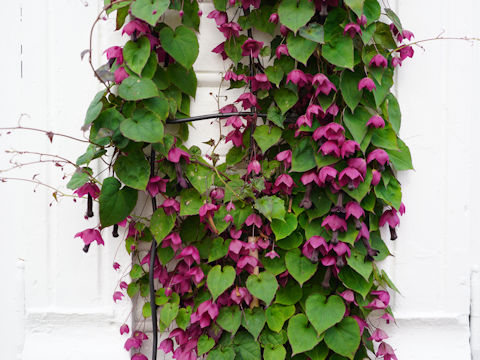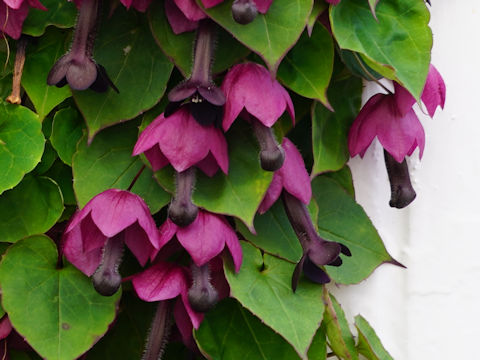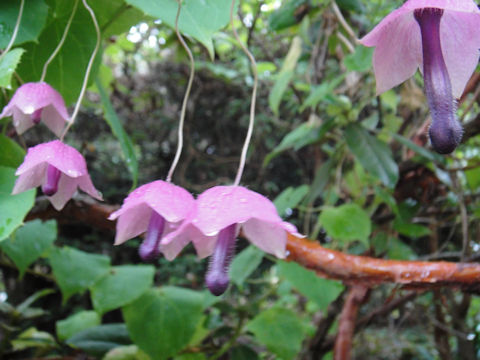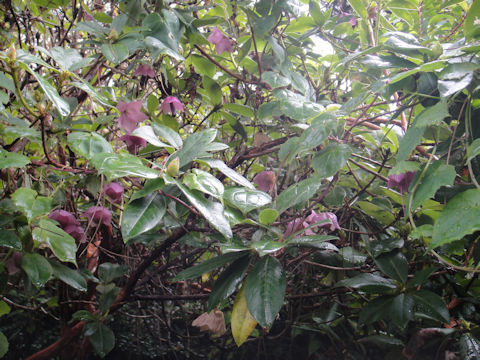
|
The Purple bell vine (Rhodochiton atrosanguineus) belongs to Scrophulariaceae (the Figwort family). It is a perennial herb that is native to Mexico. It grows in sunny forested areas, wrapping itself around other plants with its petiole, which can be up to 3 m long. The leaves are heart-shaped, somewhat hairy, and often have purple veins. From June to September, the flowers hang down on long, thread-like peduncles and bloom downward. The flowers are about 4 cm in size, and what appear to be flowers are cup-shaped, light red sepals. The true petals are tubular and blackish purple to reddish purple. It has been cultivated as an ornamental plant since the mid-19th century and was awarded the Royal Horticultural Society's Garden Merit Award. The genus name is from the Greek word "rhodo-" (rosy) + "chiton" (tunic). A chiton is a type of tunic worn by men and women in ancient Greece and Rome that fastened at the shoulders.
|



